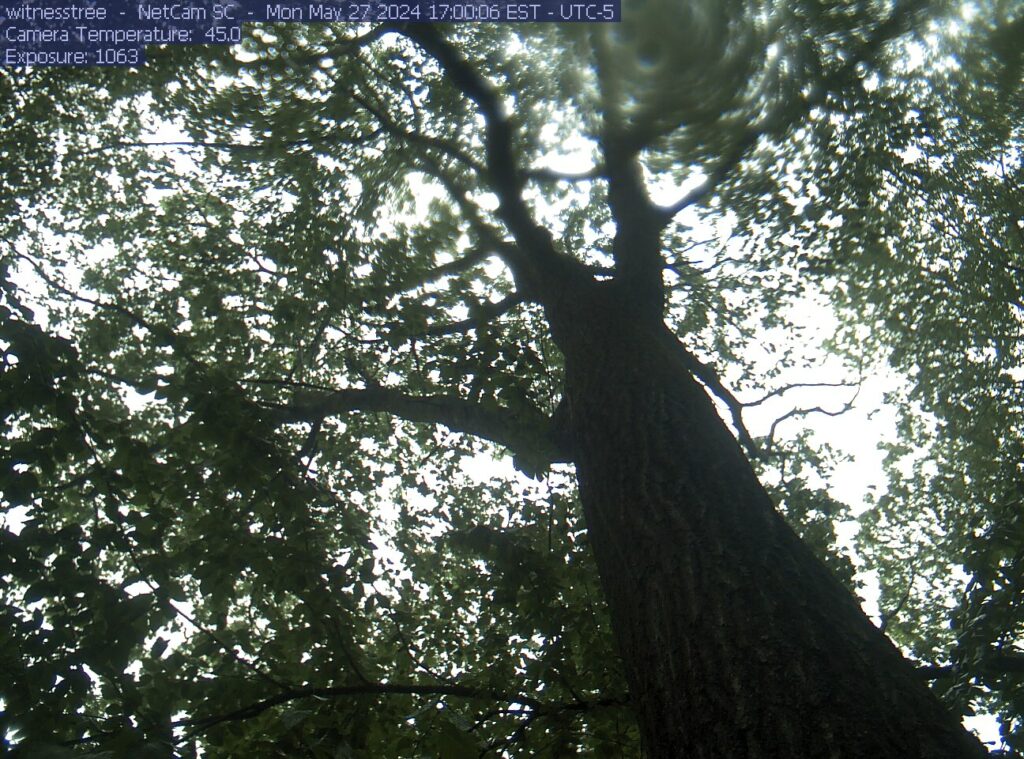Have you ever wondered what plants would post if they could access social media? Researchers at the Harvard Forest certainly have and found a way of doing just that with A Witness Tree!

A Witness Tree is custom-built program that combines sensor information and archival forest data to create a computer program that translates data into posts for Facebook and X. The project’s goal is to spread real-time information on the tree’s life and the changing environment through innovative more-than-human storytelling.
How it Works
Post-doctoral fellow Tim Rademacher and colleagues installed multiple sensors and cameras on and around the tree. These specialized sensors and cameras help measure various aspects of the tree’s vitality and its surrounding environment such as tree growth, transpiration, canopy changes and weather. This data is also linked to Harvard Forest data archive, extending the tree’s climate data by over 55 years. The tree’s data is then translated into social media posts using a custom-built software.

Why We Think @awitnesstree is DEH
The concept more-than-human storytelling is a central concept in the environmental humanities. In the field of digital environmental humanities specifically, addressing how technology could translate these narratives, and the ethical implication of doing so is a relevant topic of interest particularly when it comes to thinking about Anthropocene narratives of loss and human-plant-nature relations1. While A Witness Tree does not necessarily engage with the latter, it certainly does exemplify how we can begin to tell more-than-human stories using novel technologies.
A Witness Tree Today

@awitnesstree has not made a post in over a year, but it is still very exciting that we once had plants actively generating content on social media! We hope to see more of these projects in the future as it extends our understanding of more-than-human narratives. Until then, we encourage you to check out the Harvard Forest webpage to learn more about how this project was created: https://harvardforest.fas.harvard.edu/witness-tree-social-media-project
- Ryan, J., Hearn, L., and Arthur, P. L. (2023). The Digital Environmental Humanities (DEH) in the Anthropocene:Challenges and Opportunities in an Era of Ecological Precarity. Digital Humanities Quarterly 017. https://www.digitalhumanities.org/dhq/vol/17/3/000714/000714.
html ↩︎